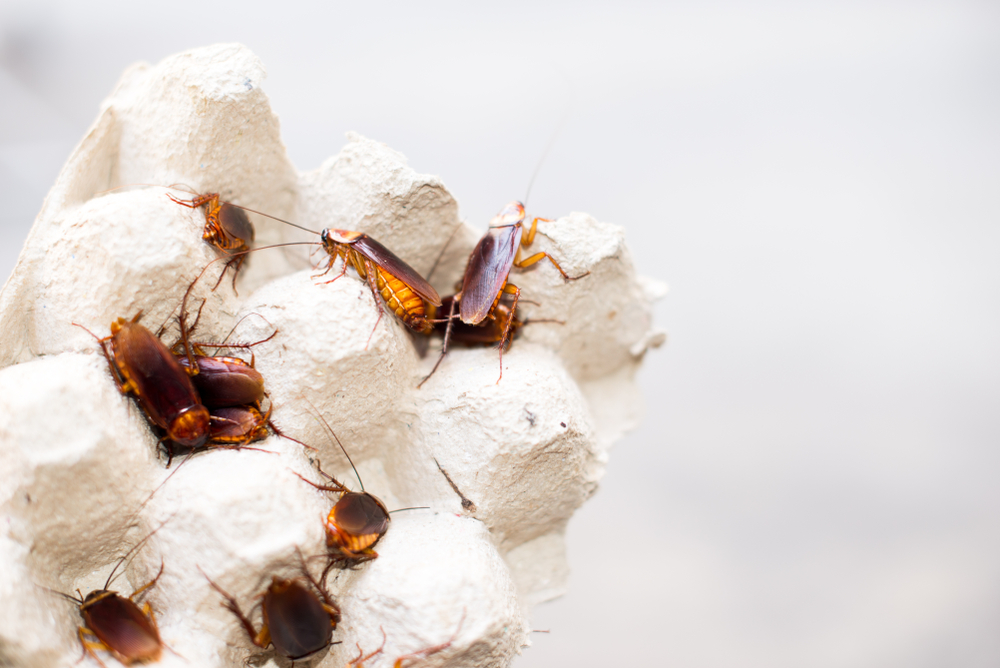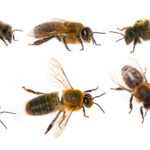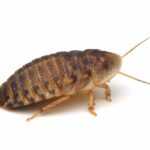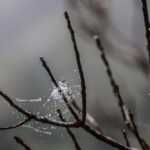10 Common Cockroach Breeds and How to Identify Them
Identifying different cockroach breeds is crucial for effective pest control, as each species has unique habits and habitats.
- Professional pest control services are essential for managing cockroach infestations, especially for challenging species like German and American cockroaches.
- Implementing Integrated Pest Management strategies, including sanitation practices and targeted treatments, is vital for reducing and preventing cockroach populations.
Understanding Cockroach Breeds
Recognizing different cockroach species is essential for effective pest control. Each type has unique habits and habitats, requiring tailored control methods. Understanding these breeds is the first step in effective management.
Cockroach infestations can be a nightmare for homeowners and businesses. Identifying the species and understanding their habits is key to effective control and prevention.
German, brown-banded, oriental, and American cockroaches are common species in homes and businesses. Each has distinct habits and habitat preferences, explored in the following sections, including the types of cockroaches.
German Cockroach (Blattella germanica)
The German cockroach, scientifically known as Blattella germanica, is one of the most common cockroach species found in homes and businesses. These pests are notorious for their ability to develop resistance to certain pesticides, making them particularly challenging to control. Adult German cockroaches typically measure between 13 to 16 mm in length and are characterized by their brown color.
German cockroaches rely on crawling as they are not competent flyers. Despite their small size, they can cause significant problems, frequently infesting kitchens and bathrooms in homes.
Identification Features
German cockroaches are light brown or tan, which aids in their camouflage in indoor environments. One of the most distinctive features of the German cockroach is the two dark stripes that run lengthwise along the top of their thorax. These stripes make it easier to identify them compared to other cockroach species.
These oval-shaped pests are typically found in areas with high humidity and easy access to food. Their small size and light brown color allow them to blend into their surroundings, making them difficult to spot until an infestation is well underway.
Common Habitats
German cockroaches are commonly found indoors, especially in kitchens and bathrooms where food and moisture are abundant. These conditions make them thrive, making them a common pest in homes and businesses.
They gather in areas like kitchens, bathrooms, and laundry rooms. Common hiding spots include under sinks, behind appliances, and in dark corners. Experts at finding small cracks and crevices, they can be challenging to eliminate without professional help.
Understanding the common habitats of German cockroaches allows you to eliminate their hiding places and reduce infestation risk. Regular cleaning, fixing leaks, and sealing cracks can make your environment less inviting to these pests.
American Cockroach (Periplaneta americana)
The American cockroach, scientifically known as Periplaneta americana, is recognized as the largest type of house cockroach. Adult American cockroaches measure about 4 cm (1.5 inches) in length and have a distinctive reddish-brown color. These pests are often referred to as “water bugs” due to their preference for warm, humid environments.
American cockroaches thrive in various locations, especially urban environments where food and shelter are abundant. They are significant pests in commercial settings like restaurants and grocery stores, and also in damp areas like basements and crawl spaces.
Identification Features
American cockroaches have a distinctive oval shape and reddish-brown color, making them easy to identify. While generally not strong fliers, they can exhibit flying abilities ranging from poor to moderate.
Typically found in areas with high humidity and food access, their size and color make them noticeable. However, their ability to hide in dark, damp areas can make them challenging to control without professional assistance.
Typical Locations
American cockroaches thrive in warm, humid areas, favoring urban environments. They’re commonly found in commercial buildings like restaurants and grocery stores, where food and moisture abound.
In residential areas, they often inhabit damp spaces like basements and crawl spaces. Sewers and drains also provide easy access to water and food for them.
American cockroaches enter through cracks and gaps around doors, windows, and openings in walls and floors. Sealing these entry points and regular maintenance can reduce infestation risk. Effective pest control measures are essential to keep them at bay.
Oriental Cockroach (Blatta orientalis)
The Oriental cockroach, scientifically known as Blatta orientalis, is characterized by its dark brown to shiny black appearance and preference for cool, damp areas. These pests are often found in sewers, drains, and other damp environments, where they can easily find moisture and food.
Oriental cockroaches move slowly, making them easier to spot than faster types. Despite this, their preference for hidden, damp areas can make them challenging to control.
Identification Features
Oriental cockroaches are distinct with their dark brown to shiny black appearance. Males have small wings that don’t enable flight, and females have even smaller wings, making them less mobile than other species.
Typically found in areas with high humidity and moisture, their dark coloration and slow movement make them easy to identify. Their longer lifespan can make infestations particularly persistent.
Habitat Preferences
Oriental cockroaches prefer cool, damp areas. They thrive in high humidity environments, commonly hiding in sewers, drains, and under furniture.
Often found in outdoor locations with easy access to moisture, understanding their habitat preferences allows you to eliminate hiding places and reduce infestation risk. Regular maintenance and pest control measures are essential.
Brown-Banded Cockroach (Supella longipalpa)
The Brown-Banded cockroach, scientifically known as Supella longipalpa, is a small species of cockroach that typically measures about 1/2 to 5/8 inches in length. These pests are known for their preference for higher areas in homes, such as ceilings and cabinets.
Brown-Banded cockroaches are often found in bedrooms and living rooms, making them harder to detect. They are also known for gluing egg cases in hidden locations like ceilings and behind drawers.
Identification Features
The Brown-Banded cockroach is small with two distinct horizontal bands across its body. Adult males are slightly larger, measuring 13-14.5 mm, while females range from 10-12 mm. Males have longer wings covering their entire abdomen; females have shorter wings.
The absence of dark pronotal stripes differentiates the Brown-Banded cockroach from the German cockroach. Nymphs of the Brown-Banded cockroach display light yellow bands on their dorsal side, aiding in their identification.
Common Infestation Spots
Brown-Banded cockroaches are commonly found in higher areas within homes, such as ceilings and cabinets. This preference for elevated locations makes them harder to detect. Bedrooms, living rooms, and elevated areas are typical infestation spots.
Female Brown-Banded cockroaches are known to glue their egg cases in hidden locations, such as ceilings, behind drawers, and under furniture. This behavior can make it challenging to locate and eliminate their eggs, leading to persistent infestations.
Understanding common infestation spots for Brown-Banded cockroaches allows you to monitor and control their presence. Regular inspections of elevated and hidden areas can help detect and address infestations early.
Smoky Brown Cockroach
The Smoky Brown cockroach is a notable pest, distinguished by its large size and dark coloration. Typically ranging from 1 to 1.5 inches in length, they are very dark brown or black. Commonly found in warm, humid environments, they are prevalent in certain regions.
Taking up to 320 days to reach maturity, female Smoky Brown cockroaches produce 10 to 30 egg cases during their lifespan. They prefer high humidity and heat, making them common in warm climates.
Identification Features
Smoky Brown cockroaches are easily identifiable by their large size and very dark coloration. They thrive and reproduce in warm, humid environments. Their dark color and large size make them more noticeable than other species.
Known for their strong flying abilities, Smoky Brown cockroaches can be particularly challenging to control. Understanding their identification features helps in monitoring and managing their presence in your home or business.
Preferred Habitats
Preferring high humidity and heat, Smoky Brown cockroaches are commonly found in warm, humid areas. Often discovered in outdoor locations like mulch, woodpiles, and leaf litter, they seek moisture and are common in gardens and yards.
They can also be found in indoor locations with high humidity, such as basements and crawl spaces. Understanding their preferred habitats allows for the elimination of hiding places and reduces infestation risk. Regular maintenance and pest control measures are essential.
Pennsylvania Wood Cockroach
Primarily an outdoor species, the Pennsylvania Wood cockroach prefers natural environments. Commonly found under the bark of dead trees, in tree holes, and wood piles, they may occasionally be seen indoors.
Feeding on decaying organic matter, they are common in outdoor environments with abundant vegetation and fallen wood. Understanding their habits and habitats helps in monitoring and controlling their presence.
Identification Features
Adult male Pennsylvania Wood cockroaches can reach lengths of 0.66 to 0.96 inches and have fully developed wings for short flights. Females have reduced wing pads and are less mobile.
Typically found in outdoor environments, they blend with their natural surroundings. Understanding their identification features helps in monitoring and controlling their presence in your home or garden.
Typical Environments
Pennsylvania Wood cockroaches typically live under the bark of dead trees, in tree holes, and in wood piles. Their primary habitat includes fallen wood and outdoor areas, where they feed on decaying organic matter. Commonly found in gardens, yards, and wooded areas.
Though they prefer to stay outdoors, Pennsylvania Wood cockroaches may occasionally be seen indoors, especially during mating season or when attracted to light. Understanding their typical environments helps in monitoring and controlling their presence.
Signs of a Cockroach Infestation
Indicators of a cockroach infestation include:
- Droppings resembling coffee grounds
- A bad smell
- Shed skins
- Oval-shaped egg cases
Small white cockroaches suggest a larger infestation. Inspect kitchens and bathrooms, especially under appliances and sinks.
A cockroach running away when the light is turned on indicates many more hiding in the dark. Cockroaches avoid light, leading to their presence in dark, hidden areas. It is crucial to act quickly upon noticing signs of a cockroach infestation to prevent spreading, as they can carry allergens and pathogens.
Visual Clues
Common signs of cockroach activity can help identify an infestation in your home. Here are some indicators to look for:
- Dark, greasy smudges are often found on surfaces where cockroaches travel, indicating their presence.
- If cockroaches are seen during the day, it could indicate a heavy infestation or that they have been poisoned.
- Cockroaches may find their way into homes primarily during the mating season due to attraction to light.
By understanding the visual clues that indicate cockroach activity, you can take steps to monitor and control their presence in your home. Regular inspections of common hiding places and dark areas can help you detect and address infestations before they become severe.
Effective Cockroach Control Methods
Implementing an Integrated Pest Management (IPM) strategy is crucial for controlling cockroach populations. Professional pest control services are often necessary for managing significant cockroach infestations effectively.
Customized treatment plans are designed based on specific pest control needs, and professionals can provide tailored treatments that target specific cockroach species and their habitats. Seeking expert help ensures that health risks associated with pest infestations are minimized.
Sanitation Practices
Sanitation is the primary control strategy against cockroaches, crucial for preventing infestations. German cockroaches are significantly attracted to areas where food and moisture are easily accessible. To eliminate water sources for cockroaches, it is important to fix leaks and use dehumidifiers.
Frequent cleaning and maintenance, such as washing dishes and covering food, are essential practices to keep homes free from cockroaches. By maintaining proper sanitation practices, you can reduce the risk of cockroach infestations in your home.
Use of Baits and Traps
Gel baits are an effective method to reduce cockroach populations. Gel baits should be applied in small amounts at various cockroach hiding spots for effective control. For Brown-Banded cockroaches, baits should be placed in elevated locations and on shelves in cupboards and bookcases.
By using baits and traps, you can target specific cockroach species and reduce their populations effectively. Regular monitoring and reapplication of baits may be necessary to ensure long-term control.
Natural Repellents
Diatomaceous earth works by abrading the waxy coating of cockroaches, causing them to desiccate. Boric acid acts as a stomach poison to cockroaches, taking effect within 5 to 10 days. Essential oils can serve as natural deterrents against cockroaches, helping to keep them at bay.
A mixture of baking soda and sugar can act as an effective homemade bait for cockroaches. Natural repellents are effective tools in keeping cockroach infestations at bay. By using natural repellents, you can reduce the risk of cockroach infestations in an eco-friendly manner.
Benefits of Professional Help
For larger infestations, it is advisable to call a professional exterminator to ensure comprehensive treatment. Dealing with a cockroach infestation can be challenging and may require professional assistance for effective management. By seeking professional help, you can ensure that health risks associated with pest infestations are minimized.
Understanding and identifying different cockroach breeds is crucial for effective pest control. By knowing the habits and habitats of common cockroach species, you can take steps to prevent infestations and manage them effectively. Whether you’re dealing with German cockroaches, American cockroaches, or any other species, professional pest control services can provide tailored solutions to address your needs. Don’t let cockroaches take over your home—take action today and ensure a pest-free environment.
Frequently Asked Questions
What does a cockroach look like?
Cockroaches have flat, oval-shaped bodies, long antennae, and six legs, ranging in color from reddish-brown to dark brown or black. They can vary in size, typically measuring between half an inch to three inches long.
Why is it important to identify different cockroach species?
Identifying different cockroach species is essential for implementing targeted control strategies and effectively preventing infestations. This specificity enhances pest management efforts and ensures more successful outcomes.
What are the common signs of a cockroach infestation?
The common signs of a cockroach infestation include droppings that look like coffee grounds, an unpleasant odor, shed skins, and oval-shaped egg cases. Identifying these signs early can help you address the issue more effectively.
How can I prevent cockroach infestations in my home?
To effectively prevent cockroach infestations, maintain cleanliness by regularly cleaning up food debris, sealing entry points, and storing food in airtight containers. Taking these proactive measures will significantly reduce the likelihood of an infestation in your home.
What are some effective natural repellents for cockroaches?
Diatomaceous earth, boric acid, essential oils, and a mixture of baking soda and sugar are effective natural repellents for cockroaches. These methods can help you maintain a pest-free environment.




